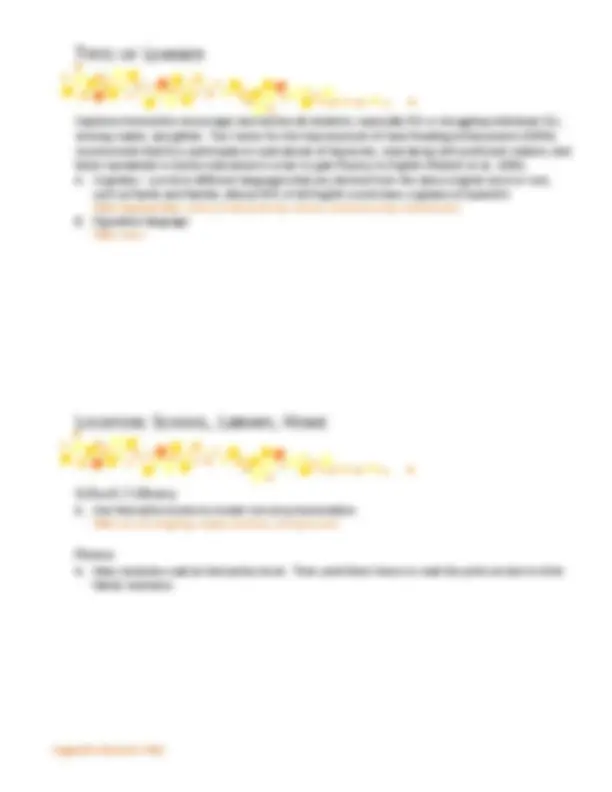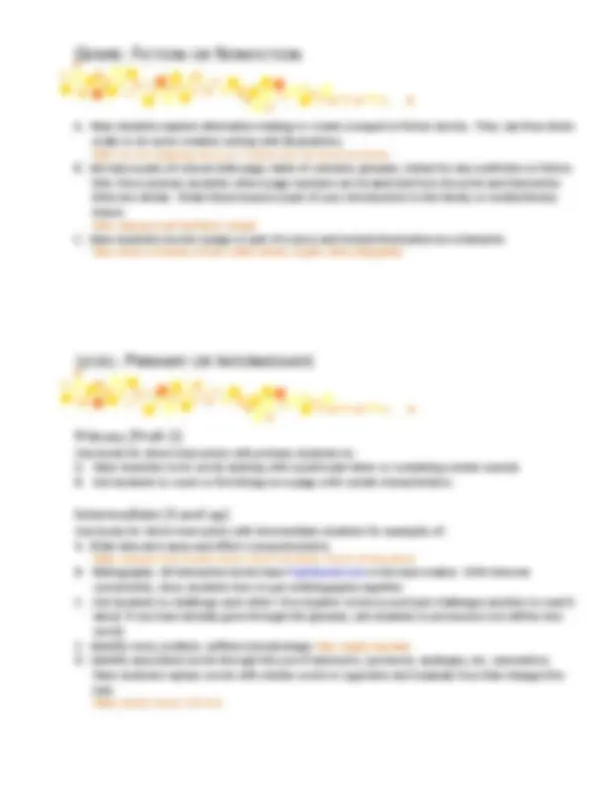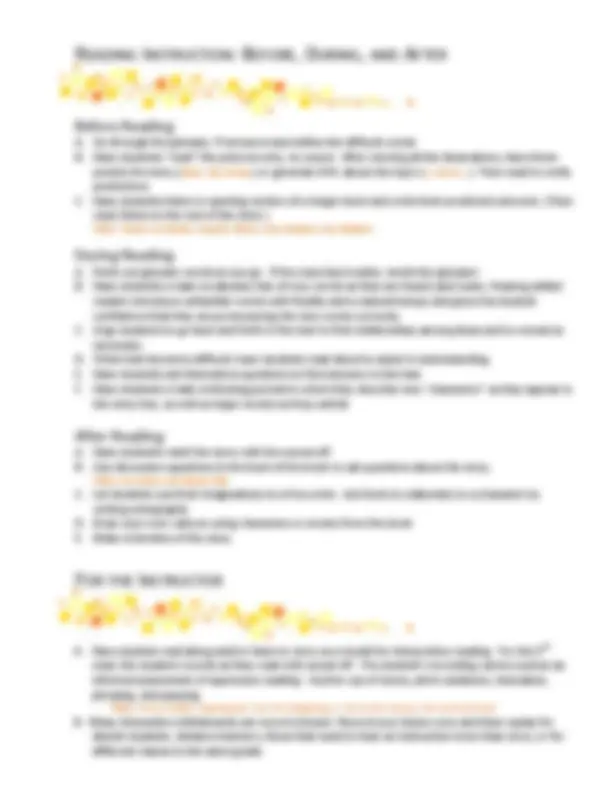





Study with the several resources on Docsity

Earn points by helping other students or get them with a premium plan


Prepare for your exams
Study with the several resources on Docsity

Earn points to download
Earn points by helping other students or get them with a premium plan
Community
Ask the community for help and clear up your study doubts
Discover the best universities in your country according to Docsity users
Free resources
Download our free guides on studying techniques, anxiety management strategies, and thesis advice from Docsity tutors
Teaching suggestions for Capstone Interactive, a digital learning tool suitable for various group configurations, types of learners, and locations. It covers strategies for large, small, and independent group readings, as well as suggestions for home use. The document also discusses the use of Capstone Interactive for different genres, reading levels, and instructional phases.
Typology: Lecture notes
1 / 5

This page cannot be seen from the preview
Don't miss anything!




Your Capstone Interactive instruction will vary depending on your audience. Its size, age, level of readers, and interests all need to be taken into consideration when planning your lessons. To start, what type of medium are you going to use? Capstone Interactive will play on any personal computer, laptop, or interactive whiteboard. An interactive whiteboard is a touch-sensitive device that interacts with a computer’s desktop. Some of the most well known brands include SMART Board, ActivBoard, eBeam, Mimio, and Webster and all are compatible with Capstone Interactive. When these are not options for you, remember that all Capstone Interactive products are also available as hard cover books too. We want our titles to be available to everyone, at anytime, no matter what the ability or circumstance.
The suggestions are designed to focus on the following:
When reading through this lesson guide, consider the type of medium you will be using. Most lesson and idea tips can be adapted from one type of group configuration to another.
Whole class direct instruction with interactive whiteboard or data projector makes this the 21st century big book. A. Make your own readers theater. Choose students to play particular characters and the narrator. Then turn the sound off. This type of instruction will help students understand graphic novel for- mat. Titles: CAP Graphic Library, Stone Arch Books B. Read the whole book as a group. Using the interactive whiteboard functions, pause the book to focus on language structure and use, reading strategies: a. Identify rhyming words, words with specific blends, initial sounds (phonology). Titles: Animal Babies, Toys ABC b. Highlight parts of speech, such as nouns, verbs. Have students note how many nouns or verbs are on each page or have them come up to circle them. Titles: Happy Halloween, Gus!, Blast to the Past, Tyrannosaurus Rex C. Read the book as a group with sound on, then with sound off for guided oral (or choral) reading. Titles: Gus the Hedgehog, Jimmy Sniffles: Dognapped D. Use a title during science instruction. Pause the book to explain theories or do experiments. Titles: CAP Graphic Science
A. Use for “Team Jigsaw.” Working in groups of four, assign each student in the group a page to read. Once each student completes his/her section, he/she can teach the others what was read. Titles: George Washington: Leading a New Nation, The Salem Witch Trials. B. Use as Total Physical Response – Pairs or teams of four all participate in a 1st^ read of the book with the sound on. Two students take turns alternating reading on the 2nd^ read, with the sound off, while the other two act out or perform the actions, i.e., respond physically. Titles: Life of Max ; Night of the Homework Zombies; Tiger Moth, Insect Ninja C. Have pair of students read different nonfiction books (or portion of them). Once completed, have them reread the text and develop questions, pretending to prepare a test for their partner. Titles: Jackie Robinson: Baseball’s Great Pioneer, Blast to the Past
Introduce new genres that students might not otherwise consider and introduce students to books above their independent reading level. Titles: Any of the Graphic Library and Stone Arch Books
A. Customize your instruction to the medium you are using. If using personal computers, do an initial lesson on how to turn pages, look up glossary words, change volume etc. Interactive whiteboards will take that lesson one step further as the students will need to learn how to use its special features.
A. Have students explore alternative endings or create a sequel to fiction stories. They can then share orally or do some creative writing with illustrations. Titles: Gus the Hedgehog, Eek & Ack: Invaders from the Great Goo Galaxy. B. Introduce parts of a book (title page, table of contents, glossary, index) for any nonfiction or fiction title. Show primary students where page numbers are located and how the print and Interactive titles are similar. Make these lessons a part of your introduction to the library or media literacy lesson. Titles: Dinosaurs and Prehistoric Animals C. Have students rewrite a page or part of a story and include themselves as a character. Titles: Stone Arch Books, Picture Window Books, Graphic Library Biographies
Use books for direct instruction with primary students to: A. Have students circle words starting with a particular letter or containing certain sounds. B. Ask students to count or find things on a page with certain characteristics.
Use books for direct instruction with intermediate students for examples of : A. Main idea and cause and effect (comprehension) Titles: Capstone Press Graphic Library, Stone Arch Books, Picture Window Books B. Bibliography. All Interactive books have FactHound.com in the back matter. With Internet connectivity, show students how to put a bibliography together. C. Ask students to challenge each other! One student circles a word and challenges another to read it aloud. If you have already gone through the glossary, ask students to pronounce and define new words. C. Identify roots, prefixes, suffixes (morphology) Titles: Mighty Machines D. Identify associated words through the use of antonyms, synonyms, analogies, etc. (semantics) Have students replace words with similar words or opposites and evaluate how that changes the text. Titles: Healthy Snacks, The Farm
A. Go through the glossary. Pronounce and define the difficult words. B. Have students “read” the pictures only, no sound. After viewing all the illustrations, have them predict the story (Titles: Life of Max) or generate KWL about the topic (A Visit to…). Then read to verify predictions. C. Have students listen to opening section of a longer book and write their predicted outcome. (Then read /listen to the rest of the story.) Titles: Stone Arch Books, Graphic Library, Max Readers, Gus Readers
A. Point out glossary words as you go. If the class has trouble, revisit the glossary! B. Have students create vocabulary lists of new words as they are heard (and seen). Hearing skilled readers introduce unfamiliar words with fluidity and a natural tempo and gives the student confidence that they are pronouncing the new words correctly. C. Urge students to go back and forth in the text to find relationships among ideas and to reread as necessary. D. When text becomes difficult, have students read aloud to assist in understanding. E. Have students ask themselves questions to find answers in the text. F. Have students create a listening journal in which they describe new “characters” as they appear in the story line, as well as major events as they unfold.
A. Have students retell the story with the sound off. B. Use discussion questions in the back of the book to ask questions about the story. Titles: Any Stone Arch Books Title C. Let students use their imaginations in a free write. Ask them to elaborate on a character by writing a biography. D. Draw your own cartoon using characters or events from the book. E. Make a timeline of the story.
A. Have student read along and/or listen to story as a model for interpretive reading. For the 2nd read, the student records as they read with sound off. The student’s recording can be used as an informal assessment of expressive reading – his/her use of stress, pitch variations, intonation, phrasing, and pausing. Titles: Jimmy Sniffles: Dognapped!; Gus the Hedgehog; A Visit to the Library; The World of Food B. Many interactive whiteboards can record a lesson. Record your lesson once and then replay for absent students, distance learners, those that need to hear an instruction more than once, or for different classes in the same grade.